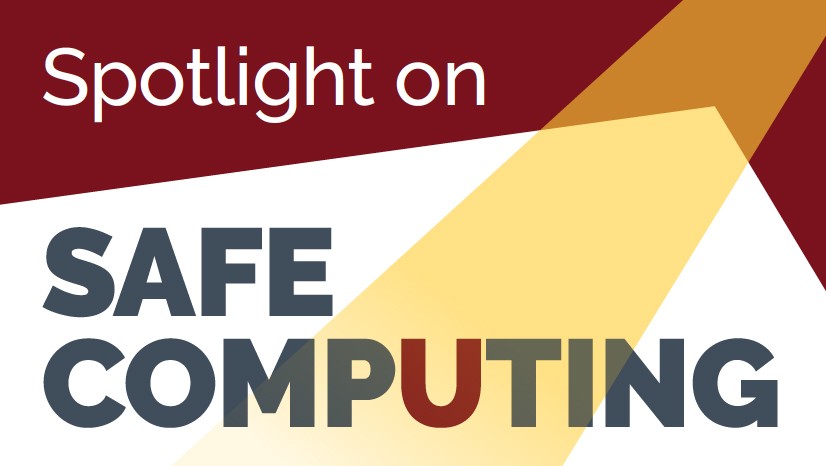
Encryption is for everyone: Keeping your data safe and secure

What is encryption? It sounds confusing and complicated. Maybe encryption is not for me?
Well… encryption is for everyone! And sometimes it’s as simple as turning on a setting on your device to make sure any information you have, from the photos on your cell phone to the University data you work with to your homework assignments, is safe and secure. Any data and device can be protected with encryption.
Encryption means that stored information is in a format that is inaccessible by individuals or computers without a “key.” A key could be a PIN number, fingerprint or biometric verification, or even a combination of several types of authentication. Information stays scrambled and is inaccessible without the key or keys to the device, so even if someone finds themselves with your computer, phone, or tablet, they cannot crack into the stored data if they don’t have your PIN or password.
Encryption should be set up on personal devices, work devices, and on cloud services. See the University’s device encryption standard policy to learn what types of information or devices require encryption.
The process of setting up or turning on encryption changes from device to device. On iPhones and Androids, if you enable screen locks of any type, your information is being encrypted, as that “key” is needed to access the device. In fact, for iOS 8 and beyond, encryption is built in. On Android devices, advanced encryption can be enabled in the device settings. For a Mac, you can turn on full-disk encryption with FileVault. For Windows devices, the best solution is called Bitlocker and it is built in.
Backup adds another layer of protection!
Encryption adds a strong layer of security to your information and important data. There are many ways to enable security features on your devices. Another such way to secure your information is setting up a backup. A backup is making extra copies of data in case the original is lost or damaged and creating a backup of your data is crucial. It minimizes the risk that your important files, like family photos, tax documents, or your senior thesis or capstone project, could be lost in case of theft, loss, malicious software or device destruction or failure. Backing up data isn't difficult, but with many ways to go about it, sometimes it is confusing to get started.
There are a few common options for backing up your data for your personal devices and personal information:
Cloud storage - Regardless of your device, you can use services such as Dropbox, OneDrive, Google Drive, Google Photos, and more to back up and, in some cases, automatically sync your information to the cloud. If your device fails, your information will still be accessible online.
Online storage - There are many online backup services, where companies provide space and services for backup. If you have a lot of information to back up or would like assistance with syncing and maintenance, you can consider online storage such as CrashPlan or Box Secure Storage.
Physical or local backups - You can use flash drives, external hard drives, or additional pieces of hardware such as the Apple Time Machine to sync or make copies of all of your files, creating a backup of your information. If you use physical backups, make sure they are not stored in the same place as your devices. For instance, keep your flash drives or external hard drives in a safe place, not with your laptop or tablet. This is especially true if you are backing up personal, sensitive, or private information. Backup drives should also be encrypted for further security. If you set up a backup, you must back up your data regularly, not just once a year or whenever you feel like you have an important file to save.
If you are setting up a backup for your University device and University data, consult with your local IT department or University of Minnesota Technology Help for guidance on how and where to save your content. It is important to note that University data must be stored on University approved sites.
Wherever you store your data or information, encrypt it. Whatever you are storing, back it up. This will keep your digital property safe and secure. Don’t be scared off by technical terms or overwhelmed by the amount of information you may have on your devices, backups can be set up easily and encryption is for everyone!